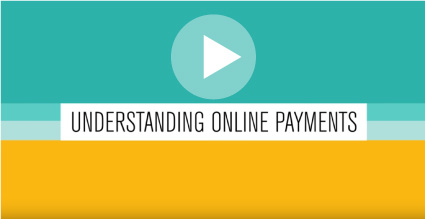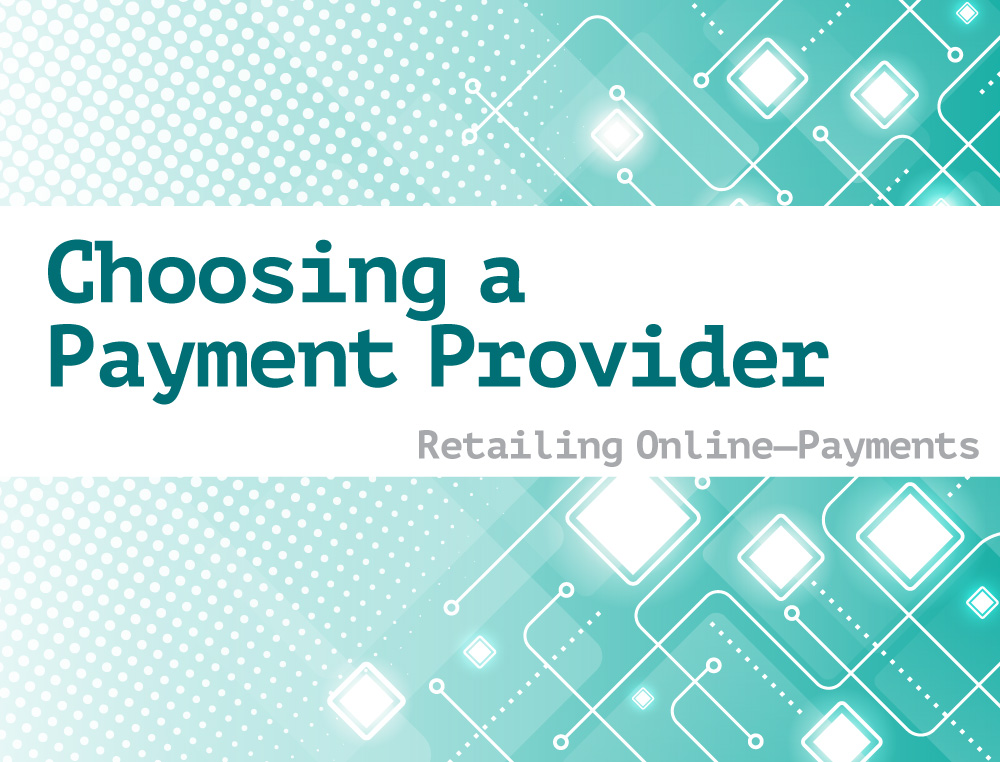Choosing the right payment processor for your business is one of the most important decisions you make when setting up your ecommerce website. And once you’re up and running, ensuring you have the right payment gateway to suit your business only grows in importance.

To make an informed decision, you’ll need to get caught up on the three Ps of payment processing: players, procedures and pricing.
Who’s Involved in an Online Payment Transaction?
There are three main players when it comes to processing credit and debit card transactions, whether you sell online or in person. On one end is you, the business owner. On the other end is your customer. In between are various technology solutions that connect the two of you.
- You, the merchant: To accept credit card payments, you need to partner with a merchant bank (sometimes called an acquirer) who accepts payments on your behalf and deposits them into a merchant account (not the same as a payment gateway) that they provide .
- Your customer: For your customer to buy and pay for their order, he or she needs a credit or debit card. The bank that approves your customer for the card (and lends him or her the cash to pay you) is called the issuing bank.
- The technology: In the middle are two technologies that enable you and your customer to transact.
- The first is a payment gateway, software that links your site’s shopping cart to the card processing network.
- The second is the payment processor (or merchant service), which does all the heavy lifting: moving the transaction through the processing network, sending you a billing statement, working with your bank, etc. Often, your merchant bank is also your payment processor, which helps simplify things.
How Payment Transactions Are Processed
As a business owner, it’s helpful to understand exactly how money moves from your customer to you.
There are two stages to payment processing: the authorization (approving the sale) and the settlement (getting the money into your account).
Here’s how this transaction occurs:
- Your customer buys an item on your site with a credit or debit card.
- That information goes through the payment gateway, which encrypts the data to keep it private before sending it to the payment processor.
- The payment processor sends a request to the customer’s issuing bank asking for the money to pay for your stuff.
- The issuer responds with a yes (approval) or a no (denial).
- If approved, the payment processor tells you the transaction is accepted, and also tells your merchant bank to credit your account.
This back-and-forth process all takes place within 1–2 seconds.
The second part of the process (where you get paid!) is the settlement:
- The card issuer sends the funds to your merchant bank, which deposits the money into your account.
- The funds are available. Sometimes, your bank lets you access your money before it’s even sent to them. They also might keep a portion in your account that you can’t touch, just in case there are things returned from customers later (that’s called a reserve, in payments speak).
This half of the process can take a few days.
Payment Processing Fees & Policies
Now that you understand exactly how you get your money from customers via payment processing platforms, let’s address the cost issue.
It’s no surprise that everyone who touches the transaction wants to get paid, including the issuing bank, the credit card associations (Visa, MasterCard, etc.), the merchant bank and the payment provider.
At its most basic, every time you process a transaction, you pay several fees:
- Interchange: The issuer gets paid a pre-negotiated percentage of each sale. This fee varies depending on many factors, such as industry, sale amount and type of card used. At last check, there were almost 300 different interchange fees.*
- Assessment: The credit card association (Visa, MasterCard, etc.) also charges a pre-negotiated percentage fee, called an assessment.
- Markup: Your merchant bank takes a percentage cut by charging you a markup fee, the amount of which also varies by industry, the amount of the sale and your monthly processing volume.
- Processing: The payment processor (who might also be your merchant bank) makes money by charging a fixed-rate fee every time you process a transaction — no matter whether it’s a sale, a decline or return. Plus, it can charge fees for setup, monthly usage and even account cancellation.
The above fees are often bundled together, so you can have a tough time figuring out who’s getting what amount of your money.
Beyond the individual fees themselves, there are three different ways processors can structure them as part of an overall pricing plan:
- Flat-rate pricing: You pay a fixed percent for all transaction volume, no matter what the actual costs are. All of the above fees are baked into this single rate. For example, you are charged a bundled rate of 2.9% of the transaction amount + $0.30 per transaction. On a $100 sale, the fee you pay works out to be $3.20.
- Interchange plus pricing: Your merchant service charges you a fixed fee on top of the interchange — for example, 2% + $0.10 on top of a 1.8% interchange fee. On a $100 sale, that works out to be a $3.90 fee. Remember, too, that there are 300 or so different interchange fees, so the 1.8% can vary wildly.
- Tiered pricing: The processor takes the 300 or so different interchange rates and lumps them into three buckets, or pricing tiers: qualified, mid-qualified and nonqualified. This makes it simpler for you (and them) to understand. However, since the processor defines the buckets however it wants, it can be expensive. As an example, the fees you pay on a $100 sale could range from $2.50 to $3.50, depending on how it has been classified.
10 Questions All Businesses Should Ask a Payment Provider
For those looking for a top-level view of the issue, and a speedier read, here are the most important questions to ask a potential payments processing provider before you choose to use their services.
Are there different rates or fees associated with different types of cards?
Some services charge different fees to process different types of card transactions –– e.g. personal, business, debit and rewards cards –– as well as for different transaction amounts. Make sure you know exactly what you’ll be paying to process each type of transaction.
Do you charge “billbacks,” or are all charges related to a transaction billed in the same month?
It’s not unusual for a payment processor to entice you by quoting low rates. But sometimes that low rate only applies to certain types of cards (see question one). You may only find out after the fact that many of your transactions during the month didn’t qualify for that low rate.
For example, in January, you think you’re getting a 1.7% rate on your credit card transactions, but you processed several rewards cards. Even though you processed the transactions in January, come February, your processor charges you back, or bills you back, a higher rate. Now you have two different statements with two different rates for the same transaction, which makes it much harder to figure out the actual rate you’re paying.
What rates or fees do you charge when I swipe credit cards, enter them manually (key-enter) or accept them online?
To compensate for the risk of fraud, processors charge different rates depending on how you process a payment. Because there is less fraud associated with cards that are physically swiped in a terminal (after all, you check IDs, right?), there is usually a lower rate. If someone calls you to buy something and gives you their number over the phone, the chance of foul play goes up a bit, as does the processing fee.
Online purchases have the highest incidence of fraud, so payment processors cover their risk by charging a higher rate. Make sure you know what those rates are and then figure out how much of each type of processing you’ll do to get a rough blended rate.
Do you charge a separate fee for your gateway?
It’s pretty common for processors to charge a separate fee for their payment gateway, usually on a per-transaction basis. So in addition to the standard transaction fee –– say 2.9% + $0.30 –– you’ll pay a gateway fee for each transaction.
When I refund a transaction, do I get back any of the initial fees?
Most credit card processors keep all of the fees for return transactions, and will most likely even charge an additional fee to process the refund. That means you can lose money every time a customer returns something. Be sure you are clear on how this process works, as it should inform your return policy. Many merchants sidestep this cost by issuing store credit for a returned item, rather than a refund.
What are the contract terms and are there early termination fees?
Most credit card processors impose a contract term for a specific amount of time, often one or two years. Many times, early termination or cancellation fees are part of the agreement. That’ll make it difficult for you to switch processors if you’re unhappy with how your account is handled.
What fees do you charge each month?
This question is deceptively simple since some processors might provide you with a seemingly small upfront monthly fee. But be sure to dig deeper — some additional fees might be hidden in the fine print. These can include fees for batch processing or fund transfers from a merchant account to your bank account, as well as statement fees. Processors might “waive” some of these fees to get your business, but could add them back in after a promotional period.
Is there a monthly minimum processing requirement or fee?
Some processors charge a monthly minimum fee, which you’ll pay if your monthly transaction volume falls below a certain amount. This can be a significant financial pain for early-stage businesses with few monthly credit card transactions.
Is there a limit on how much I can process?
Many processors limit the amount you can process based on your initial approval with them. Obviously, this can be frustrating if your business grows quickly or has a busy season — not to mention the negative impact that turning down orders will have on your business.
What type of support is offered?
When your payments hit a snag, will the processor be there to support you until you’re back up and running? Further, an automated phone system isn’t the same as speaking to a live person, so make sure to ask if they have live customer support. Low rate processing fees don’t mean much if you can’t reach someone to help when you need it most.
by Chase Jones
Article and video courtesy: bigcommerce.com

